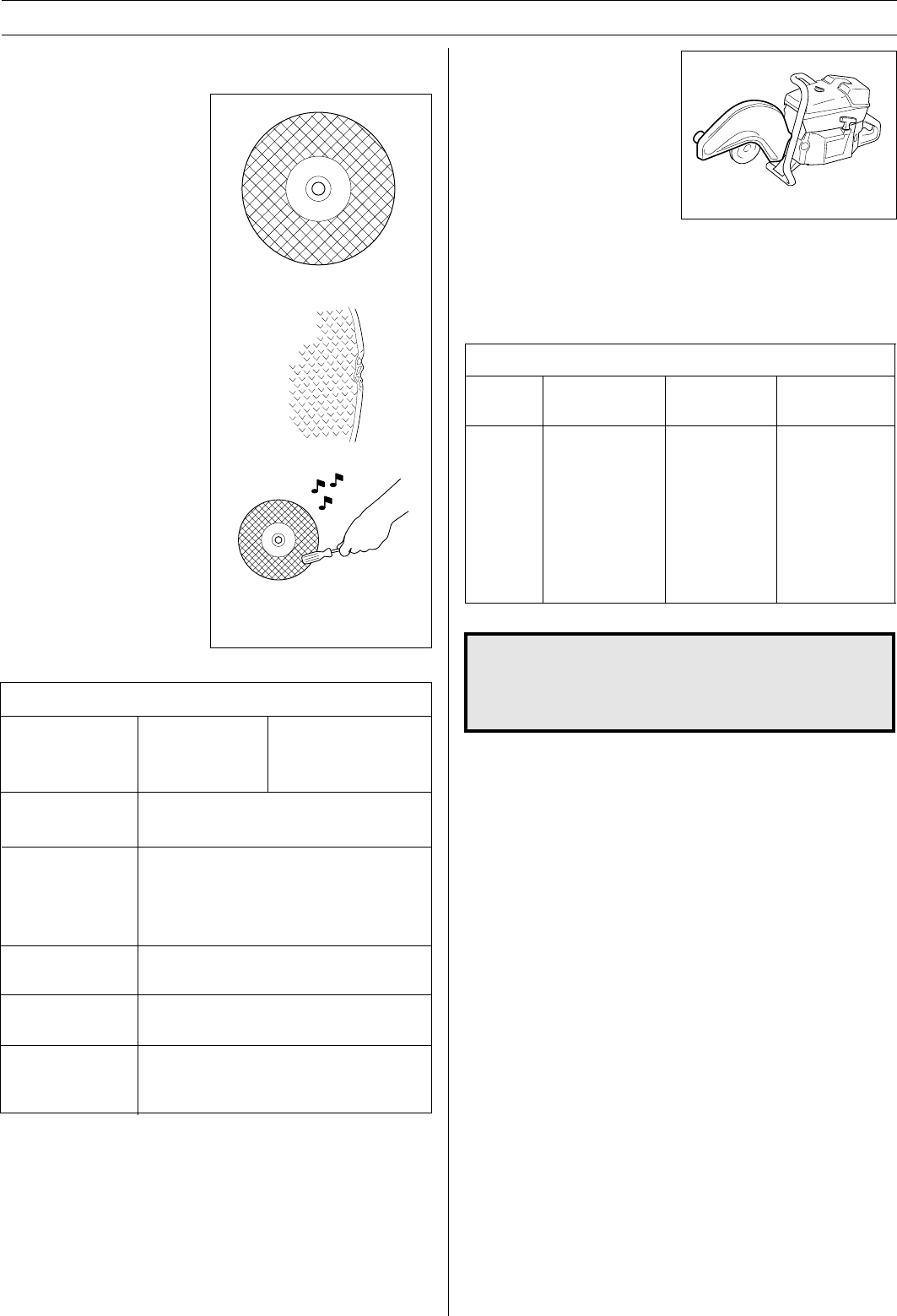
English – 11
SAFETY INSTRUCTIONS
Cutting discs
Type of cutting discs
Check that the disc is
approved for high speed,
portable power cutters. Do not
exceed the maximum working
speed stated on the disc.
Damage
• Ensure the disc it not
cracked or damaged in any
other way.
• Test the disc by hitting it
gently with a piece of wood.
If the disc does not give a
full-sounding ring then it is
damaged.
• Never use a disc that has
fallen on the floor.
Assembly
• Check that the disc is fitted
correctly and is secure.
• Follow all specifications in
the table below.
100 m/s
6300 rpm
Specifications for fitting discs
Standard discs
centre hole
(spindle)
Reducing bush*
Backing pad
(Must be used)
Spindle hole/
drive shaft
Flange tightening
Disc/guard
inches
mm
Max. thickness
Min thickness
Material
Max. thickness
Play
The disc does not slip, flange not bent
Check that the disc runs free of the
guard.
.787 7/8 1
20 22,2 25,4
Disc thickness
3 mm (1/8")
Highly compressible,
e.g. blotting paper
0,5 mm (.020")
0,2 mm (.010")
* Plastic reducing bushes may only be used with abrasive discs.
Do not use reducing bushes with diamond discs or tungsten
carbide tipped blades. We recommend that the spindle is
replaced so that it fits the discs to be used rather than using a
reducing bush. Contact your service workshop for details.
Diamond discs
Diamond discs are basically made in the same way as abrasive
discs but are manufactured from industrial diamonds held
together by a bonding agent.
Guard
Check that the guard is not
crack or shows signs of any
other damage. Clean the
inside of the guard before
fitting a new disc. Check that
the guard can be adjusted and
locked.
Material
All brickwork,
reinforced
concrete and
other
composite
materials.
NOT
recommended
for metal.
General char-
acteristics
Low cost per
cutting opera-
tion. Less disc
changes.
Constant cutting
depth. Less
dust.
Water cooling
Increases the
disc’s service
life.
DIAMOND DISCS TYPES AND USES
Diamond
disc
Using diamond discs
Proceed as follows:
• Let the disc rotate in the same direction as the arrow
indicates.
• Cool continually with water.
• Keep the disc sharp.
• Remove the disc when transporting the cutter.
Avoid:
• Running the disc in the wrong direction.
• Forcing a dull disc or wedging the disc into a cut.
• Transporting the cutter with the disc fitted.
• Letting the disc fall on the work piece.
Dry diamond discs
Dry diamond discs are a new generation of discs that do not
require water cooling. However, the discs are still damaged by
excessive heat. It is good economics to let the disc cool by
simply lifting the disc from the cut every 30–60 seconds and let
it cool for 10 seconds.
!
WARNING!
Cool a diamond disc continually with water to
prevent overheating, which can cause the disc
to break and pieces being thrown off resulting
in injury and damage.


















